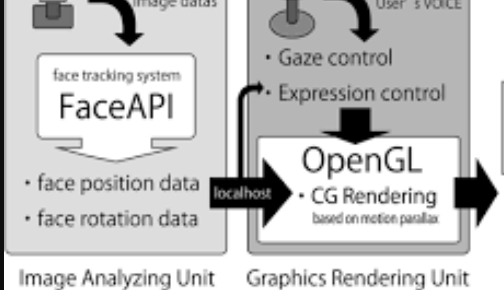Spatial Communication and Recognition in Human-agent Interaction using Motion-parallax-based 3DCG Virtual Agent
PubDate: October 2015
Teams: Kansai university
Writers: Naoto Yoshida;Tomoko Yonezawa

Abstract
In this paper, we propose spatial communication between a virtual agent and a user through common space in both virtual world and real space. For this purpose, we propose the virtual agent system SCoViA, which renders a synchronized synthesis of the agent’s appearance corresponding to the user’s relative position to the monitor based on synchronization with the user’s motion parallax in order to realize human-agent communication in the real world. In this system, a real-time three-dimensional computer-generated (3DCG) agent is drawn from the changing viewpoint of the user in a virtual space corresponding to the position of the user’s head as detected by face tracking. We conducted two verifications and discussed the spatial communication between a virtual agent and a user. First, we verified the effect of a synchronized redrawing of the virtual agent for the accurate recognition of a particular object in the real world. Next, we verified the approachability of the agent by reacting to the user’s eye contact from a diagonal degree to the virtual agent. The results of the evaluations showed that the virtual agent’s eye contact affected approachability regardless of the user’s viewpoint and that our proposed system using motion parallax could significantly improve the accuracy of the agent’s gazing position with each real object. Finally, we discuss the possibility of the real-world human-agent interaction using positional relationship among the agent, real objects, and the user.

